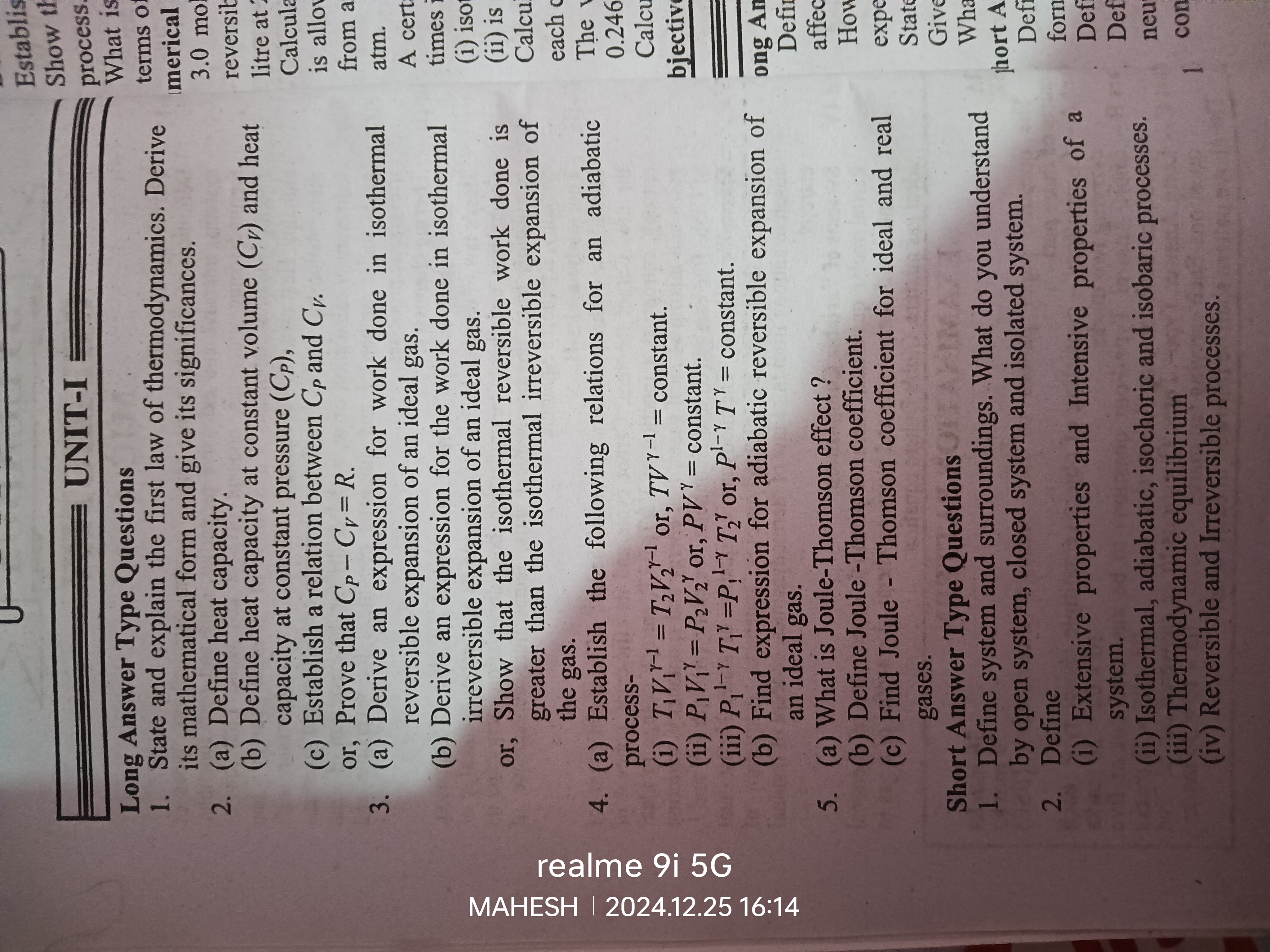Explain the first law of thermodynamics. Derive its mathematical form and give its significances. Define heat capacity. Define heat capacity at constant volume (Cv) and heat capaci... Explain the first law of thermodynamics. Derive its mathematical form and give its significances. Define heat capacity. Define heat capacity at constant volume (Cv) and heat capacity at constant pressure (Cp), prove that Cp - Cv = R, derive an expression for work done in isothermal reversible expansion of an ideal gas, derive an expression for the 'isothermal irreversible expansion' of the gas, show that the 'isothermal reversible work done' is greater than the isothermal irreversible work done, find expression for adiabatic reversible expansion of an ideal gas, and explain Joule-Thomson effect.

Understand the Problem
The question is asking for an explanation and derivation of various thermodynamic concepts, including the first law of thermodynamics, heat capacities at constant volume and pressure, reversible and irreversible processes, and the Joule-Thomson effect. It expects definitions and mathematical expressions relevant to these topics.
Answer
The first law: ΔU = Q - W. Heat capacity: C = Q/ΔT; Cv and Cp defined similarly. Cp - Cv = R. Wrev > Wirrev. Joule-Thomson: temperature change upon expansion.
The first law of thermodynamics can be expressed as ΔU = Q - W, where ΔU is the change in internal energy, Q is the heat added to the system, and W is the work done by the system. Heat capacity C is defined as C = Q/ΔT. At constant volume, Cv = (dQ/dT)v, and at constant pressure, Cp = (dQ/dT)p. The relation Cp - Cv = R is derived using the ideal gas equation and definitions of Cp and Cv. In isothermal processes, work done in reversible expansion is Wrev = nRT ln(Vf/Vi) and in irreversible expansion, it is Wirrev = Pext * ΔV. Adiabatic reversible expansion work is given by Wadiabatic = Cv(Ti - Tf). The Joule-Thomson effect describes the temperature change in a gas when it is allowed to expand without doing external work.
Answer for screen readers
The first law of thermodynamics can be expressed as ΔU = Q - W, where ΔU is the change in internal energy, Q is the heat added to the system, and W is the work done by the system. Heat capacity C is defined as C = Q/ΔT. At constant volume, Cv = (dQ/dT)v, and at constant pressure, Cp = (dQ/dT)p. The relation Cp - Cv = R is derived using the ideal gas equation and definitions of Cp and Cv. In isothermal processes, work done in reversible expansion is Wrev = nRT ln(Vf/Vi) and in irreversible expansion, it is Wirrev = Pext * ΔV. Adiabatic reversible expansion work is given by Wadiabatic = Cv(Ti - Tf). The Joule-Thomson effect describes the temperature change in a gas when it is allowed to expand without doing external work.
More Information
The first law highlights the conservation of energy in thermodynamic systems. The relation between Cp and Cv is crucial for understanding heat transfer processes. Joule-Thomson is significant in industrial applications like refrigeration.
Tips
Confusing Cv and Cp, using incorrect formulas for work done in expansions.
Sources
- Heat Capacity - Relationship Between Cp and Cv for Ideal Gas - byjus.com
- Derive the equation for the First Law of Thermodynamics - homework.study.com
- Heat capacity at constant volume and pressure - Khan Academy - khanacademy.org
AI-generated content may contain errors. Please verify critical information